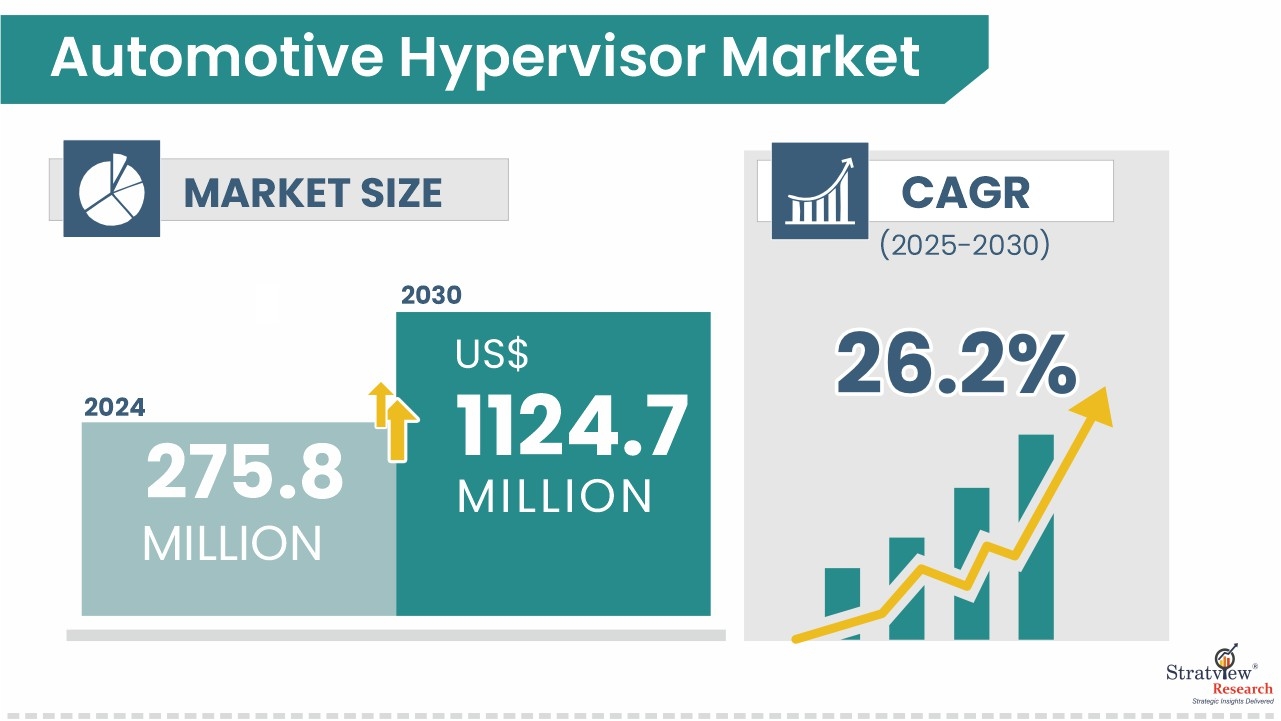Technological Innovations in the Automotive Hypervisor Market

The Automotive Hypervisor Market is rapidly evolving as technological advancements enable new capabilities for in-vehicle systems. Hypervisors, which allow multiple operating systems to run on a single platform, are increasingly used in autonomous vehicles, connected cars, and smart manufacturing to improve efficiency, safety, and performance.
According to Stratview Research, the Automotive Hypervisor Market is projected to grow at a CAGR of 26.2%, reaching USD 1.1 billion by 2030, driven by innovations in virtualization technologies, autonomous driving systems, and advanced computing platforms.
Download the sample report here, to uncover in-depth insights:
https://stratviewresearch.com/Request-Sample/4075/automotive-hypervisor-market.html#form
Technological Innovations in the Automotive Hypervisor Market
- Virtualization Technologies and System Partitioning:
Advances in virtualization technologies enable the safe separation of critical and non-critical systems in vehicles. By allowing multiple operating systems to run on a single hardware platform, hypervisors improve system performance, reduce hardware costs, and ensure the security of safety-critical functions. - Integration of Artificial Intelligence (AI):
The integration of AI with automotive hypervisors is improving the performance of autonomous vehicles and ADAS. AI-powered hypervisors can manage real-time data processing from multiple sensors and cameras, enabling smart decision-making for autonomous driving and collision avoidance. - Advanced Computing Platforms for Autonomous Driving:
As autonomous driving technologies become more sophisticated, the need for powerful computing platforms grows. Hypervisors play a key role in managing the complex computational demands of autonomous systems, allowing for the simultaneous operation of sensor fusion, real-time navigation, and AI decision-making. - Edge Computing and Low-Latency Communication:
Edge computing enables data processing closer to the source, reducing latency and improving real-time decision-making in autonomous vehicles. Hypervisors facilitate the integration of edge computing into vehicle systems, allowing for faster, more efficient data processing.
Market Drivers for Technological Innovation in Hypervisors
- Growing Demand for Autonomous Vehicles and ADAS:
The increasing demand for autonomous driving systems and advanced driver-assistance systems (ADAS) is driving innovations in hypervisor technologies. These systems require advanced virtualization, sensor integration, and real-time data processing. - Increased Complexity of In-Vehicle Electronics:
As in-vehicle systems become more complex, automotive manufacturers are turning to hypervisors to manage multiple software platforms in a cost-effective and efficient manner.
Challenges in the Market
- Data Privacy and Security:
Ensuring the secure communication between autonomous vehicles, in-vehicle networks, and cloud platforms is critical. The integration of AI, 5G, and edge computing must be done with a focus on cybersecurity and data privacy. - Standardization and Interoperability:
The automotive industry needs standardized frameworks to ensure that hypervisor solutions can work seamlessly across different vehicle platforms and manufacturers.
Conclusion
Technological advancements in virtualization, AI, edge computing, and autonomous driving systems are driving the growth of the Automotive Hypervisor Market. As these innovations continue, hypervisors will play an increasingly important role in the development of autonomous, connected, and efficient vehicles.
- Questions and Answers
- Opinion
- Motivational and Inspiring Story
- Technology
- Live and Let live
- Focus
- Geopolitics
- Military-Arms/Equipment
- Security
- Economy
- Beasts of Nations
- Machine Tools-The “Mother Industry”
- Art
- Causes
- Crafts
- Dance
- Drinks
- Film/Movie
- Fitness
- Food
- Games
- Gardening
- Health
- Home
- Literature
- Music
- Networking
- Other
- Party
- Religion
- Shopping
- Sports
- Theater
- Health and Wellness
- News
- Culture

